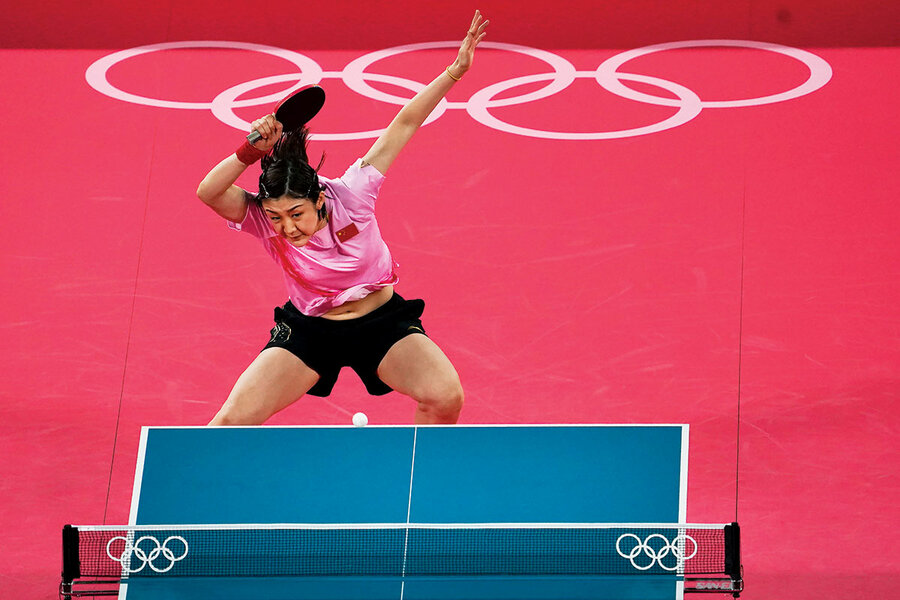There is no ping without a pong
Loading...
In February 2020, before most of the world knew what was coming, my husband, Bob, and I were offered an outdoor pingpong table. I am a non-athlete who married into a family that likes to hit balls with rackets and paddles. Bob’s maternal grandparents had met while playing tennis in the 1920s. His parents played badminton regularly, and his mother played doubles tennis twice a week into her 80s, often beating women half her age.
If that weren’t enough, Bob’s brother was a tennis star in college, and Bob still has some table tennis trophies. But what impressed me most about Bob’s pingpong history was his connection to Rufford Harrison. Mr. Harrison was a leader on the U.S. national table tennis team that made the famous “pingpong diplomacy” trip to China in 1971. In the late 1960s, Mr. Harrison regularly drove 20 minutes each way to practice pingpong with my then-16-year-old husband-to-be. Bob gave up the sport his junior year of high school to focus on his college aspirations. But I like to imagine that he might have become one of the youngest members of that historic team that went to China.
“What are we going to do with that pingpong table?” Bob asked me. He clearly thought we were about to acquire something we did not need or want.
“The two of us will play,” I replied.
Bob looked dubious.
Nonetheless, the folding pingpong table, complete with a cover, arrived shortly before the COVID-19 quarantines began in March 2020. We were both working at home. Every day at a little after 5, if it wasn’t raining, we played pingpong for about 45 minutes, lobbing and smashing away the anxiety or boredom of another day in lockdown.
By June, we had worn down the grass around the table. Unable to take a summer vacation, we decided to put in a patio and a simple shelter where the folded-up table could go. So much for our “free” table.
I lost every game. It didn’t bother me at first. Bob was enjoying the chance to show off. We could play outside without masks.
After each session, we folded up the table together and put on the cover. We wheeled it back into its shelter. And then we shook hands.
But there were days when I hated losing. Once I threw my paddle across the yard in a fury. I told myself that it didn’t matter that I always lost. I was playing for exercise and to provide a positive experience in a difficult time.
Then one day Bob suggested I play with a handicap of 12 points. That helped a lot – I sometimes won! I’d never been good at or interested in any kind of sport. But pingpong became the highlight of my day. The elation of winning was a new experience. The effort of trying to win was gratifying. Our rallies got longer. Even when I lost a point, I enjoyed making Bob work harder for it.
We generally played five games. I typically won two of them. Knowing that I could win sometimes made the defeats more painful, but I watched a video of high-level players and adopted their stance: legs apart, knees bent, arms akimbo. I began to get better at putting shots where I wanted them to go.
I won more games. My handicap went down to 10.
Pingpong got my husband and me through the worst of the lockdowns.
We still play, though we have more options now. Lately, with a handicap of only 8, I’ve been winning more than half the time.
The gift of the pingpong table gave us a way to have fun in a difficult time. It taught me that even a self-described bookworm can learn a new sport. Key was my husband’s suggestion that I play with a handicap so I’d have an equal chance to win. He doesn’t like to lose either, but it’s more fun for him if I actually want to participate and enjoy it. It takes two willing partners to play table tennis, after all, and two people with an equal stake in each other’s happiness to make a marriage. Simply put, when it comes to table tennis – or any other relationship – there is no ping without a pong.





